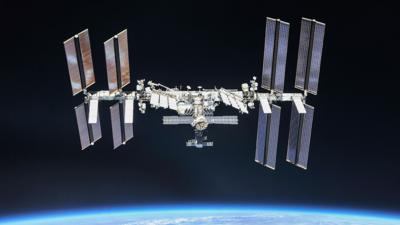NASA Responds to Russian Satellite Downing, Debris in Range of ISS
Astronomers were treated to a front-row seat to a space whodunit, as a Russian ELINT satellite, Kosmos-1408, was turned into a cloud of high-speed debris. The long-defunct Tselina-D satellite was replaced in service in 1994 and has been inoperative for decades, making it a possible target for anti-satellite technology (ASAT) testing.

On November 15, when the initial debris cloud began to trigger warnings throughout space monitoring platforms, the cause was only speculative. Soon, however, mounting evidence- a Russian NOTAM blocking off airspace above a launch complex that aligns perfectly with the orbital track of the satellite- the it became clear Kosmos-1408 was used as a test target for anti-satellite munitions.
The creation of the debris cloud worried observers and NASA personnel, due to the initial proximity of the satellite and the ISS prior to the weapons test. The Kosmos was originally on a track about 500x500 kilometers in orbit, with watchdog Seradata saying it was "a bit higher than ISS but not much. The ASAT strike on Kosmos would cause some debris to be fired below it...threatening the ISS with a crossing debris cloud." NASA said the ISS Flight Control team was notified of indications of a satellite breakup that could create sufficient debris to pose a threat to the station, with Administrator Bill Nelson describing the ASAT test as a foolhardy enterprise.
“Like Secretary Blinken, I’m outraged by this irresponsible and destabilizing action. With its long and storied history in human spaceflight, it is unthinkable that Russia would endanger not only the American and international partner astronauts on the ISS, but also their own cosmonauts. Their actions are reckless and dangerous, threatening as well the Chinese space station and the taikonauts on board. All nations have a responsibility to prevent the purposeful creation of space debris from ASATs and to foster a safe, sustainable space environment. NASA will continue monitoring the debris in the coming days and beyond to ensure the safety of our crew in orbit.”

Russia’s Defense Ministry denied that the test posed a threat to the ISS, and said that they had known it. In a release praising the performance of their test, Defence Minister Sergei Shoigu was quoted as saying "We did indeed successfully test a promising system. It hit the old satellite with razor-sharp precision. The fragments that formed pose no threat to space activity." They followed by pointing out previous tests in the same vein performed by the United States, China, and India. The Defence Ministry said they have been backed into a corner in militarizing their space capabilities following the American formation of the Space Force in 2020. Notably, overtures to prevent anti-satellite armaments have been made from Moscow in years past, but were met with little enthusiasm from the American bloc in the United Nations.
As a precaution aboard the station, NASA put the ISS crew into a closed-hatch status for two passes of the cloud, with its radial modules sealed off, leaving only the U.S. and Russian segments open. The crew was sheltered in the spacecraft for a few hours, but the cloud has been mapped with some accuracy as it stabilized into a consistent position. After the first two passed, about 93 minutes apart, the crew returned to normal activity. The debris will continue to be tracked and catalogued. Unfortunately, with an estimate of thousands of pieces created by the test, the study will take some time.
 ANN FAQ: Contributing To Aero-TV
ANN FAQ: Contributing To Aero-TV ANN's Daily Aero-Linx (05.29.24)
ANN's Daily Aero-Linx (05.29.24) ANN's Daily Aero-Term (05.29.24): NORDO (No Radio)
ANN's Daily Aero-Term (05.29.24): NORDO (No Radio) Airborne 05.28.24: Jump Plane Down, Starship's 4th, Vision Jet Problems
Airborne 05.28.24: Jump Plane Down, Starship's 4th, Vision Jet Problems ANN's Daily Aero-Term (05.30.24): Beyond Visual Line Of Sight (BVLOS)
ANN's Daily Aero-Term (05.30.24): Beyond Visual Line Of Sight (BVLOS)




